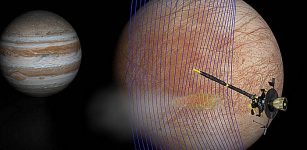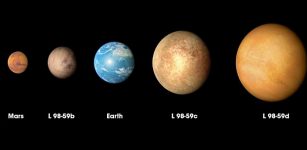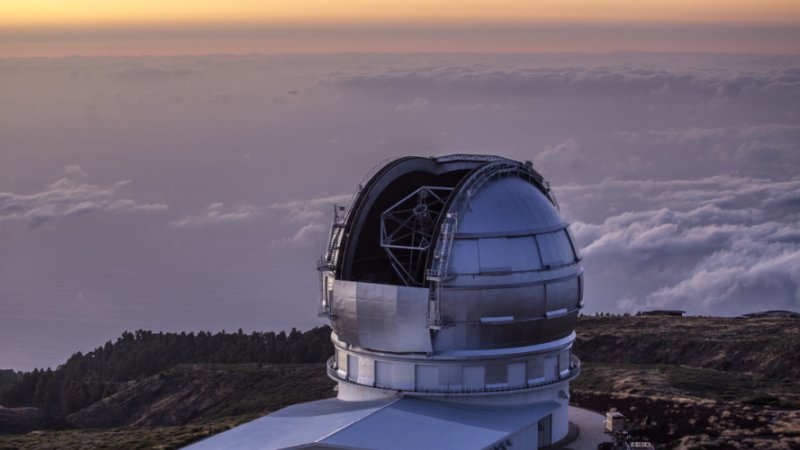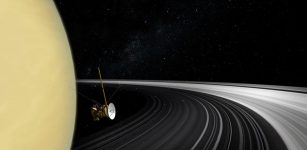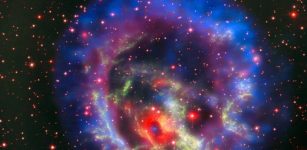‘Blue Supergiant’ Star Observed For The First Time
Eddie Gonzales Jr. – MessageToEagle.com – Supergiant stars with surface temperature ranging from 10,000 to 40,000 kelvin (17,540° to 71,540° F), making them appear blue-white. These supergiants are massive, gigantic; they live fast and die young which makes them rare and difficult to study, even with modern telescopes.
Now, using data collected by the NASA space telescopes, an international team of experts led by KU Leuven in Belgium, have observed the star for the first time and discovered that almost all of these elusive blue giants do in fact shimmer and ripple in brightness due to the presence of waves on their surface.
 Blue Supergiant – a snapshot of the interior of a star three times as heavy as our sun which shows waves generated by turbulent core convection. Credit: Dr Tamara Rogers
Blue Supergiant – a snapshot of the interior of a star three times as heavy as our sun which shows waves generated by turbulent core convection. Credit: Dr Tamara Rogers
The waves originate in their deep interior and provide exciting new prospects for studying these stars using asteroseismology (the study of waves inside stars). Researchers say that from observations of these waves, properties of the stars that are unobtainable from other astronomical techniques can now be studied.
“When we first started our simulations and predicted these waves could break at the surface we didn’t think it would ever be possible to observe them,” said astrophysicist Dr Tamara Rogers, from Newcastle University, UK, adding that massive stars live significantly shorter and more active lives before they explode in what is called a supernova and expel their material into space.
“In line with our predictions, these latest observations have confirmed two types of wave which give us different information about the star. “Those which break at the surface, similar to the waves breaking on the beach, and the standing wave that just keeps on going and is similar to the seismic waves on earth. From these we can start to understand how the star is moving and rotating and the physics and chemistry of what is going on inside the deep interior, including the stellar core.
“Although we predicted these wave patterns, until now it was just that—a simulation of what might be going on. To actually see it and prove it is really quite an incredible moment for us.”
The blue supergiants, are the metal factories of the universe before they explode as supernovae. These stars produce all chemical elements beyond helium in the Periodic Table of Mendeljev, whose 150-year anniversary will be celebrated this year.
“Before the NASA Kepler/K2 and TESS space telescopes, few blue supergiants that vary in brightness because of waves were known,” lead author Dr. Dominic Bowman from the KU Leuven Institute of Astronomy, said in a press release..
“But if you look at the brightness of an individual star for long enough with a very sensitive detector, you can map out how it changes over time. In asteroseismology, we use these variations to probe the physical and chemical processes inside the stars.”
According to Bowman, the discovery of these waves in blue supergiants allows us to study the progenitors of supernovae from a novel perspective.
Written by Eddie Gonzales Jr. – MessageToEagle.com Staff Writer




